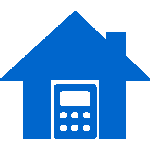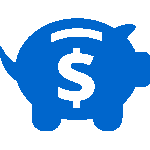- Home
- Partners
- Purchase
- Refinance
- Mortgage Programs
- | Home Purchase Qualifier |
- | Mortgage Rate Quote |
- Apply Now
- 1 Year Tax Return Mortgages
- 3.5% Down Payment Program
- Asset Depletion Mortgages
- Bank Statement Mortgages
- Bridge Loans
- Condo Mortgages
- Condotel Mortgages
- Conforming Mortgages
- Co-op Mortgages
- Construction Mortgages
- Delayed Financing Mortgages
- DSCR Mortgages
- FHA Mortgages
- First-Time Home Buyer Programs
- Foreign National Mortgages
- Investment Home Mortgages
- Jumbo Mortgages
- Manufactured Home Mortgages
- Non-Warrantable Condo Mortgages
- Portfolio Mortgages
- Second Home Mortgages
- Self-Employed Mortgages
- Short Term Rental Mortgages
- USDA Mortgages
- Veterans Mortgage
- Today's Mortgage Rates
- | Home Purchase Qualifier |
- | Mortgage Rate Quote |
- 1 Year Tax Return Rates
- Asset Depletion Rates
- Bank Statement Rates
- Bridge Loans Rates
- Condotel Rates
- Condo Rates
- Conforming Rates
- Co-op Mortgage Rates
- Delayed Financing Mortgage Rates
- DSCR Mortgage Rates
- FHA Rates
- First-Time Home Buyer Rates
- Foreign National Rates
- Investment Property Rates
- Jumbo Rates
- New Construction Rates
- Non-Warrantable Condo Rates
- Renovation Rates
- Second Home Rates
- Short Term Rental Loan Rates
- Veterans Rates
View Loan Assumptions
Rates subject to change without notice
Conforming Loan amounts up to $766,550 | FHA Loan Limits are specific to each Florida County
Check to See Florida FHA loan limits here
Second Home | Vacation Home Mortgage Rates
Owning a second home means avoiding those terrible short-term home rental disappointments and those nothing-to-do-this-weekend blues. It’s your place, only better. It’s somewhere cool.
Finding the best loan offer for your second home begins with shopping mortgage rates. With the Fidelity Home Group’s Mortgage Rate Quote tools, punch in a little data and you will receive an interest rate options in no time.
SEE SECOND HOME MORTGAGE QUALIFICATIONS
What are the differences between a mortgage on a primary residence and a mortgage on a second home?
With Second Home / Vacation Homes, we are a little more cautious on second-home financing, so you may find that making a decent-sized down payment helps seal the deal. It doesn’t have to be a huge amount: 10% should work, in most cases.
Debt-to-income ratio requirements often are a little skinnier, too. We may also look for two months’ payments in cash reserves — or more, depending on your credit profile.
And loan terms may vary a bit, depending on if the second home is a single-family unit, condo or manufactured housing.
How do mortgage rates on second homes compare to other mortgage types?
The interest rate on a second home can be a little higher than the rates you find on primary mortgages — maybe not by much, though.
What other options are available to finance a second home?
Using the equity built up in your primary residence can be a way to finance your home away. A home equity line of credit or home equity loan might help with the down payment, though you’ll still need to have the financial stability to qualify for the second home mortgage.
See How Much You Can Borrow
You’ve estimated your affordability, now get pre-qualified by Fidelity Home Group to find out just how much you can borrow.
Helpful Tools
 See Current Mortgage Rates
Compare today’s rate in real time
See Current Mortgage Rates
Compare today’s rate in real time
 Mortgage Calculator
Estimate your monthly payment
Mortgage Calculator
Estimate your monthly payment
 Affordability Calculator
See how much you can afford.
Affordability Calculator
See how much you can afford.
 Mortgage Glossary
Read mortgage terms & definitions
Mortgage Glossary
Read mortgage terms & definitions
Know the difference between interest rate vs. annual percentage rate, APR
It’s easy to confuse a mortgage interest rate and APR, but they’re quite different. The interest rate is the cost of borrowing money for the principal loan amount. It can be variable or fixed, but it’s always expressed as a percentage. An APR (annual percentage rate) includes the mortgage interest rate plus other costs such as broker fees, discount points and other lender fees, expressed as a percentage. APR is often higher than your interest rate.
What are the different types of mortgages?
Fixed-rate mortgages
Fixed-rate mortgages are the most common mortgage type. The interest rate remains the same for the life of the loan. With a fixed-rate mortgage, your monthly payment won’t change (outside of property taxes, insurance premiums or homeowner’s association fees).
Adjustable-rate mortgages
Adjustable-rate mortgages, or ARMs, have an initial fixed-rate period during which the interest rate doesn’t change, followed by a longer period during which the rate may change at preset intervals. Generally, interest rates are lower to start than with fixed-rate mortgages, but they can rise, and you won’t be able to predict future monthly payments.
Jumbo mortgages
Jumbo mortgages are conventional loans that have non-conforming loan limits. This means the home prices exceed federal loan limits. For 2020, the maximum conforming loan limit for single-family homes in most of the U.S. is $510,400, according to the Federal Housing Finance Agency. Jumbo Mortgages are more common in higher-cost areas and generally require more in-depth documentation to qualify.
Government-insured loans
Government-insured loans are backed by three agencies: the Federal Housing Administration (FHA Mortgages), the U.S. Department of Agriculture (USDA Mortgages) and the U.S. Department of Veterans Affairs (VA Mortgages). The U.S. government isn’t a mortgage lender, but it sets the basic guidelines for each loan type offered through private lenders.
Choosing the right mortgage
Narrowing your mortgage choices can be difficult. Here’s a list of pros and cons of each of the options mentioned earlier to help you decide.
| PROS | CONS | WHO IT’S BEST FOR | |
|---|---|---|---|
| Fixed-rate mortgages | Pros
|
Cons
|
Who it’s best for Borrowers who plan to stay in a home many years and want predictable, stable payments at the same interest rate for the life of the loan. |
| Adjustable-rate mortgages | Pros
|
Cons
|
Who it’s best for Borrowers who don’t plan to stay in a home for more than a few years — especially when rates are higher. |
| Conforming mortgages | Pros
|
Cons
|
Who it’s best for Borrowers with strong credit, a stable income and employment history, and a down payment of at least 3 percent. |
| Government-insured mortgages [ FHA, VA USDA ] | Pros
|
Cons
|
Who it’s best for Borrowers who have low cash savings, less-than-stellar credit or can’t qualify for a conventional loan. VA loans tend to offer the best terms and most flexibility compared to other loan types for military borrowers. |
| Jumbo mortgages | Pros
|
Cons
|
Who it’s best for Affluent borrowers purchasing a high-end home who also have good to excellent credit, high incomes and a substantial down payment. |